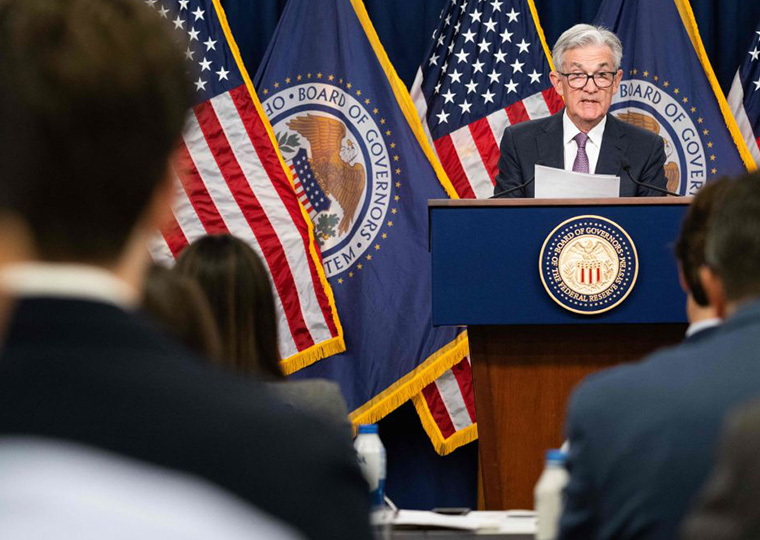Sebastian Edwards brings to life a widely forgotten chapter of U.S. history starring FDR, his no-name economist and the demise of the gold standard
For those who believe in U.S.-style monetary policy, certain tactics for economic management are sacrosanct: America does not seize its citizens’ assets, even for compensation; government does not interfere, ever, in the sanctity of private legal contracts; and the U.S. pays its debts, always.
In his latest book, UCLA Anderson’s Sebastian Edwards tells a true tale of the U.S. government’s violating each of these covenants in decidedly un-American fashion. The fact that even economy wonks have largely forgotten these 85-year-old events allows Edwards to shock with the details, even as we marvel at the audacity of the scheme. With a few amendments to the conventional rules, a monetary system that guided America for most of 150 years was turned on its head in less that 24 months.

American Default: The Untold Story of FDR, the Supreme Court, and the Battle over Gold opens at the height of the Great Depression in 1933, just before Franklin D. Roosevelt takes office as president. It’s a particularly scary time, with all banks temporarily closed and questions lingering about whether millions of depositors would ever see their money again. Unemployment reached 25 percent. Millions were hungry.
Opt In to the Review Monthly Email Update.
At the outset, FDR has no specific plan. He does have a deep conviction that raising prices of farm commodities, such as cotton and rye, will get Americans back to work. Serendipitously, an agricultural economist named George F. Warren has a radical scheme to accomplish both goals. Never mind that some of the brightest economists in the world consider Warren a quack.
What follows is a series of once unthinkable government actions to keep a grand plan on track as it came under attack on many fronts. FDR believed Warren’s theory that a devaluation of the dollar through higher gold prices would lead to proportionately higher commodity prices. To achieve this, the gold standard — the policy that linked value of the U.S. dollar to the price of gold — had to go. The administration hatched plans for getting around legal and constitutional obstacles, understanding that the courts might eventually unravel it all.
An early executive order required individuals and businesses to sell all but small amounts of their gold to the government. Penalty for noncompliance was a $10,000 fine and up to 10 years in prison.
This casting aside of personal property laws, ultimately, is a relatively minor affront presaging a much bolder free enterprise intrusion. The real tension begins weeks later when government ends the gold standard and, quickly afterward, nullifies the “gold clause” commonly included in lending contracts. This clause allowed lenders to demand payment in gold or gold equivalent, and it appeared in agreements ranging from home mortgages to U.S. Treasury bonds.
The administration went on to devalue the dollar by buying gold above world market prices, originally raising the price from $20.67 to $35 an ounce. If lenders then collected in gold equivalent, a debtor would owe $16,890 to cover what was originally a $10,000 loan. By abolishing the gold clause, Congress rewrote the terms of most contracts in America, in a way that protected the borrowers.
Lawsuits followed. In January 1935, the Supreme Court heard four gold clause cases; two related to private contracts, two to determine if the U.S. Treasury must pay bondholders in promised gold equivalents.
The court’s majority summation berates government for acting unconstitutionally. The minority proclaims shame and humiliation upon the nation: “The Constitution as many of us understood it, the instrument that has meant so much to us, is gone.” But in the end, the abrogation of the gold clause stands on a seeming tehnicality: the plaintiffs failed to show damages. So contracts, even government bonds, did not have to be paid in gold equivalent.
Edwards illuminates the sometimes clever, occasionally bizarre reasoning on all sides as the U.S. comes off the gold standard and the administration works to make the change legal. He takes a detailed analysis of how these gold policies affected the nation’s reputation and business after the court cases, and he offers explanations for why the consequences were never as dire as for some modern-day defaulters, such as Argentina. America, he concludes, had executed “an excusable default.”
Cocktail Conversation
- George F. Warren, a man who for a brief but crucial period in history was probably the most influential economist in the world, doesn’t even warrant a Wikipedia page today.
- The government could declare victory in the bond-related gold clause cases only because of a technicality. Because the plaintiff (a bondholder) had not even attempted to show he suffered a loss by being paid in unbacked currency, the Supreme Court majority, apparently reluctantly, decided he was owed no damages. To ensure that plaintiffs never again had the opportunity to sue, Congress barred federal courts from hearing future gold clause claims.
- FDR set the U.S. price for gold from his bed, surrounded by advisors and the detritus of breakfast and newspapers. Picture a large man in pajamas, ringed by subordinate white men in suits, routinely shafting debt holders while enjoying his first cigarette of the day.
- With reasoning that would make today’s spin doctors proud, FDR tells the public, via fireside chat, that the gold standard has been abandoned because there is not enough gold in the world to cover all the debts backed by gold. Creditors, however, never wanted payment in actual gold bars; they wanted cash that equated the debt to the value of gold. Gold backing clauses were simply a way to ensure that the size of the debt they could collect would remain stable.
- The president takes office with big ideas but no detailed plan. He attracts criticism for taking advice from people with questionable credentials and creates controversial policy wrought with legal issues, at times horrifying his own advisors. He uses executive orders to get around obstacles. (Sound familiar?)
Featured Faculty
-
Sebastian Edwards
Professor of Global Economics and Management; Henry Ford II Chair in International Management






